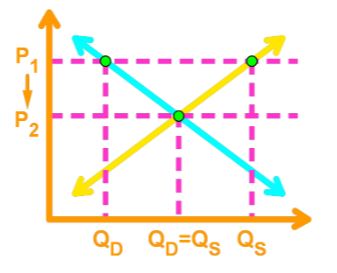Definitions of Market Equilibrium
An equilibrium is when two opposing forces balance each other. In this case, the quantity demanded and the quantity supply equal to one another.
Equilibrium Price: the price at which the quantity demanded is equal to the quantity supplied
Equilibrium Quantity: the quality that is bought and sold at the equilibrium price.
In the equilibrium, there is no excess or shortage in the product, and no tendency for the market price to change.
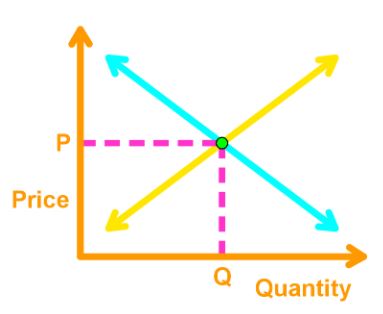
Regulating Using Price
The price of a good controls the quantities that are demanded by consumers and quantities that are supplied by producers. Depending on the price, there might be a shortage of the product, or an excess of the product.
Case 1: Price is set below the equilibrium price. In this case, there is a shortage of the product.
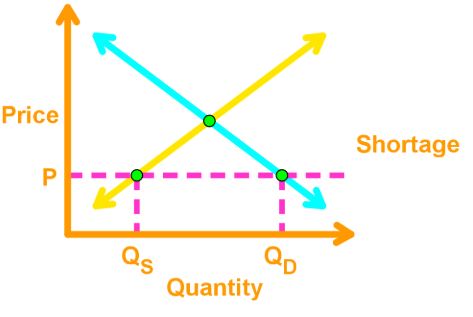
Case 2: Price is set above the equilibrium price. In this case, there is an excess of the product.
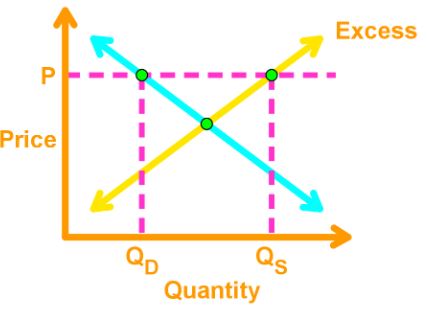
Price Adjustments
Prices and quantities always automatically adjust back to the equilibrium because buyers and sellers benefit from it. Let’s look at the two cases above and see how they get adjusted.
Case 1: A shortage of the product
This happens when the quantities demanded is greater than the quantities supplied in the market. In this case, producers notice the unsatisfied customers wanting more, so they produce more of it and increase the price until there is an equilibrium.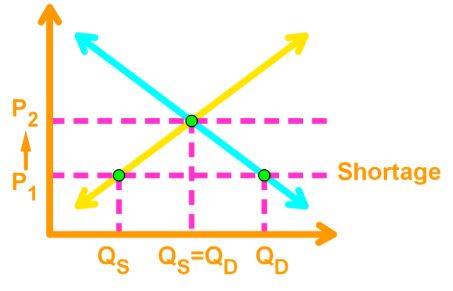
Case 2: An excess of the product
This happens when the quantities supplied is greater than the quantities demanded in the market. Since the producers can’t force the consumers to buy more, they lower their production and sell less of it, and decrease the price. They do this until there is an equilibrium.
